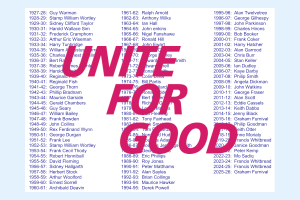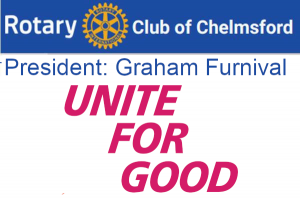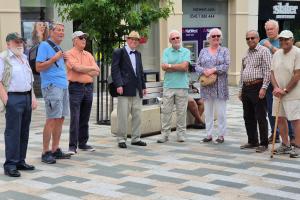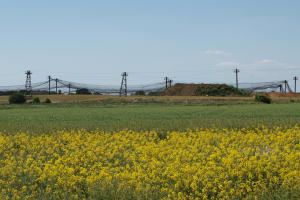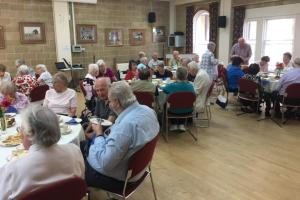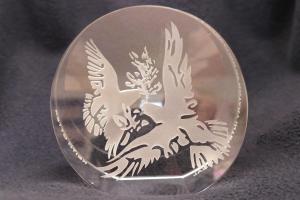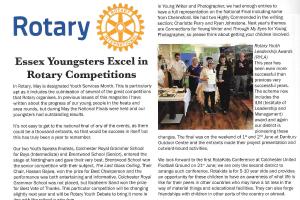Alan Pamphilon: Chelmsford's industrial heritage
Thu, May 26th 2022 at 12:45 pm - 2:15 pm
A proud heritage

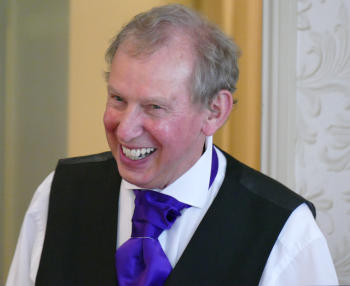 Today’s speaker was a well-known local historian, Alan Pamphilon. He started by saying he normally speaks on Chelsmford’s Industrial Heritage for about an hour but would try to be quicker than that. In the event he only managed to shave around five minutes off that time but it was a very interesting subject.
Today’s speaker was a well-known local historian, Alan Pamphilon. He started by saying he normally speaks on Chelsmford’s Industrial Heritage for about an hour but would try to be quicker than that. In the event he only managed to shave around five minutes off that time but it was a very interesting subject.
He started with the building of the Chelmer & Blackwater Navigation by the engineer Richard Coates at the end of the 18th Century. Before this was completed goods could only be transported between Chelmsford and Maldon on horse-drawn carts going over Danbury Hill. One enterprising Chelmsford businessman hired out shire horses, wearing special horse shoes, to pull the carts over the steep ascent.
The Maldon authorities objected to the navigation connecting with the Blackwater Estuary, so it meets the sea at Heybridge Basin instead.
The completion of the navigation stimulated the establishment of manufacturing at the Chelmsford Basin. A rope-making business was established just off Mouldham Street by a Mr Godfrey. The site of his second factory is now marked by Godfrey’s Mews.
Other entrepreneurs were also attracted to start businesses in the town, including most famously Marconi. His first factory was in Hall Street.
When the railway came to Chelmsford the railway company was able to buy land in the centre of Chelmsford for a railway station. A siding was built to serve Marriage’s Mill. (The company still has a mill on the same site.) Hoffman’s ball bearing factory was established next to the same siding.
Colonel Crompton, an electrical engineer, also established a factory nearby. Chelmsford was the first place in England to have public street lighting.
Marconi first came to fame when its radio equipment was used to pass messages on the sinking of the Titanic in 1912. The Marconi, Hoffmans and Cromptons factories in Chelmsford all produced material for the military in World War One.
The first radio broadcasts were from a hut Marconi had in Writtle. Dame Nellie Melba is famous as the first person to sing live in a radio broadcast but in fact that honour goes to an amateur soprano, a Chelmsford secretary, who sang in an earlier experiment that could be heard as far away as Norway.
The experiments resulted in the establishment of the first radio station giving regular broadcasts, 2MT, based in that Writtle hut. The person in charge was engineer Peter Eckersley, who acted as one of the presenters and became known to be somewhat irreverent. Broadcasts began in February 1922 and ended eleven months later, by which time 2MT had been replaced by London-based 2LO. 2LO soon became the BBC, where Peter Eckersley was their first Chief Engineer. (He didn’t broadcast again.)
Alan showed us a photograph from the 1950s of a large number of factory workers cycling home after work. Apparently Crompton’s and Marconi’s had to stagger their working hours so all their workers wouldn’t be trying to cycle home at the same time.
Sadly those those cyclists and the factories worked in are long gone, although some of the buildings remain and have been put to alternative use. However, Marriage’s Mill is still there and Marconi’s successor company is still based in Chelmsford. Its transmitters can be found in space exploration vehicles that have spread throughout the solar system.
'What We Do' Main Pages:
